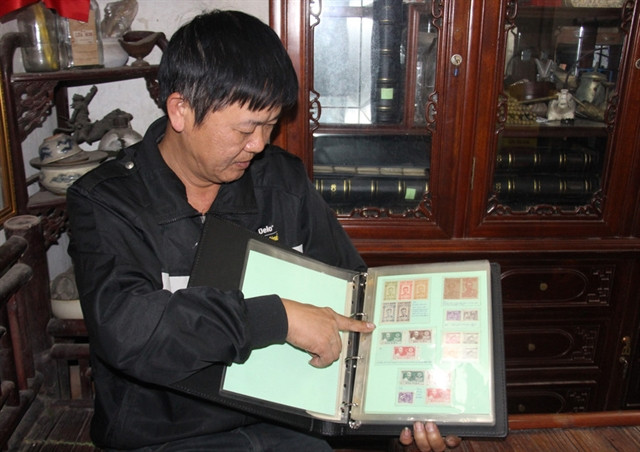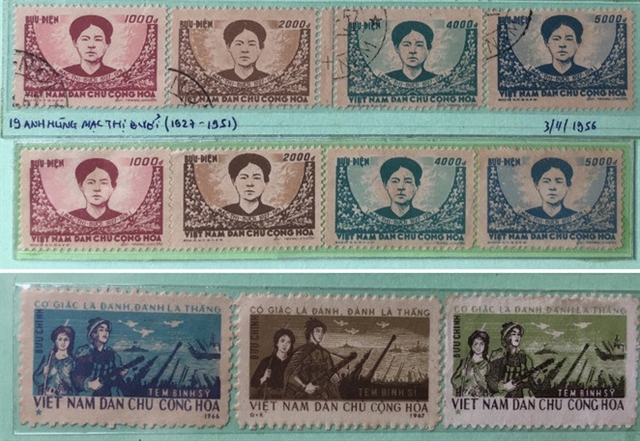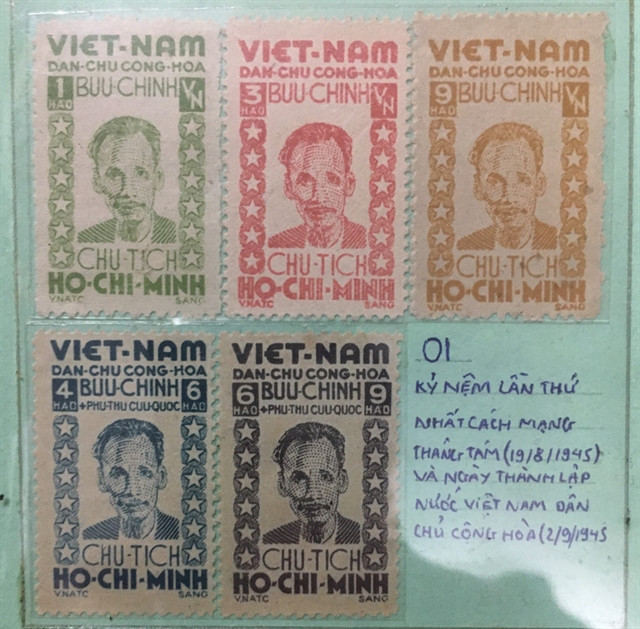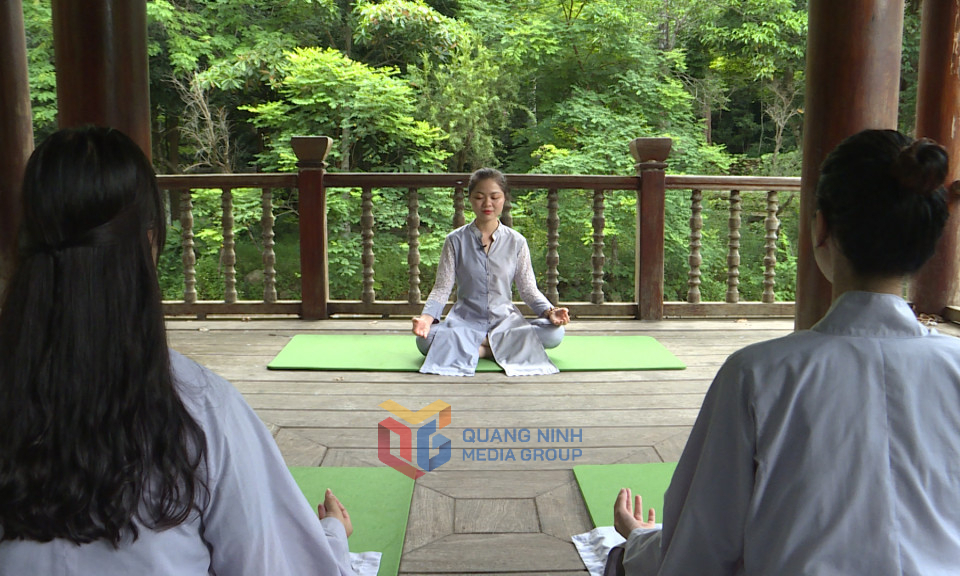Stamp collecting inspires history lesson
Based in the northern province of Nam Định, Vũ Hoài Nam is believed to own the largest collection in the province, with around 15,000 stamps.
Vũ Hoài Nam never expected to become a postage stamp collector – until a friend gave him a set as a gift. For him, stamp collecting has become a way to preserve memories, deepen knowledge and nurture his passion for history.
Based in the northern province of Nam Định, Nam is believed to own the largest collection in the province, with around 15,000 stamps.
He remembers his first stamps, issued under the title Việt Nam Dân Chủ Cộng Hòa (Democratic Republic of Việt Nam).
For Nam, the gift was priceless. He was overjoyed to hold the stamps in his hands and spent significant time researching their motifs, designs and historical symbolism.
"Intrigued, I realised how little I knew about our people and history, which those stamps vividly conveyed," Nam said. "That moment ignited my passion for stamp collecting. Every stamp is a tiny capsule whispering tales of bygone eras and inviting collectors to step back into history."
Each collector brings a personal flair to their collection, curating treasures that reflect their own style and taste.
Nam's collection traces back to 1945. When the Democratic Republic of Việt Nam (DRVN) was established in September that year, the new government had not yet issued its own stamps. Instead, it repurposed French Indochina stamps with overprints for temporary postal charges.
Thirteen different overprints were applied to 53 Indochina stamps, producing a total of 57 stamps for the DRVN. All were designed by painter Bùi Trang Chước.
In 1946, Việt Nam issued its first official stamp series, featuring images of President Hồ Chí Minh, to mark the first anniversary of National Day on September 2. The set is now considered one of the most valuable in Vietnamese philately and has been described by historian Dương Trung Quốc as a national treasure.
This five-stamp set was designed by painter Nguyễn Sáng, with each stamp measuring 26mm by 41mm and printed in different colours.
"Understanding the meaning behind each stamp isn’t easy, and preserving them over time requires patience, meticulous care and respect for these small but significant objects," Nam said.
Among his most prized items are the female war martyr Mạc Thị Bưởi series, the Binh Sĩ (Military) set and the Thương Binh (War Wounded) issue.
Nam purchased the three-stamp Mạc Thị Bưởi series for VND12 million – making it one of the most valuable Vietnamese stamp sets available.
Because of its high face value and limited availability in both domestic and international markets, the Mạc Thị Bưởi set still holds the record for the most valuable Vietnamese stamp series.
There is no official explanation as to why so few of the stamps remain. However, collectors have suggested several possible reasons.
At the time of its issue, the Vietnamese government was carrying out a public-private joint venture policy. One enterprise imported wool from Eastern Europe and exported it to Laos. To avoid trade taxes, the wool was packed into small one-kilogram parcels and sent by post as non-commercial gifts.
Most of the high-value Mạc Thị Bưởi stamps were used as postage on these parcels. Some individuals sent hundreds of such packages each day – which may explain why so few stamps survived.
Another anecdote is that a major fire at a storage facility destroyed much of the remaining stock shortly after the stamps were issued.
"That turned the few survivors into true treasures," said Nam.
After nearly three decades of collecting, Nam has completed all 1,001 sets issued between 1945 and 2010 – totalling 3,522 stamps.
"In the early days, my limited budget meant I could only buy a few stamps each time I visited Hà Nội," he said. "I slowly built up my collection piece by piece."
His stamp collecting journey was not easy at first. He had little knowledge of stamp themes and no experience of categorising them, and his budget was tight.

However, over the past 10 years, the rise of social media in Việt Nam has allowed collectors to connect and exchange information. Nam joined several stamp exchange groups online, where he expanded his collection and deepened his knowledge.
"Nam has the largest stamp collection in the Thành Nam Stamp and Currency Collection Club," said Nguyễn Phi Dũng, a fellow member.
"His collections themed around National Day and President Hồ Chí Minh are especially valuable. Nam and his collection have even been featured on national television."
Some sets highlight President Hồ Chí Minh’s iconic messages. One two-stamp set, issued in January 1967, featured his famous quotes: "We would rather sacrifice everything than lose our country and become slaves" and "Nothing is more precious than independence and freedom. Compatriots and soldiers across the country, bravely move forward."
Nam also collects stamps issued to mark national milestones. During the war of resistance against French colonialism, Việt Nam Post released stamps not only for postage but also to publicize Party and State policies. One set issued in 1953 featured six designs with the slogan "Production, Savings".
The Điện Biên Phủ Victory set, first issued in October 1954, included four designs featuring the resistance army overrunning French General de Castries’s bunker.
In January 1955, the Liberated Capital set was released, with three designs depicting soldiers and children in Hà Nội.

In 1953 and 1954, Việt Nam Post even issued stamps with values written in kilograms of rice, instead of Vietnamese đồng.
Nam said this was a unique solution. "Due to wartime shortages and limited printing capacity, new stamp prices couldn’t always be printed in time," he explained.
"Overprinting was sometimes used, but stamps weren’t always available everywhere. Printing face value in rice allowed flexibility during price fluctuations, without reissuing stamps."
For Nam, stamp collecting offers both relaxation and intellectual reward. “It’s almost impossible to collect stamps without gaining a wide base of knowledge,” he said. “They offer a return far greater than the time and effort invested.”
“I’m planning to set up a small exhibition space for my collection," he added. "I want to help young people learn about Vietnamese history through the stories each stamp set tells.”






